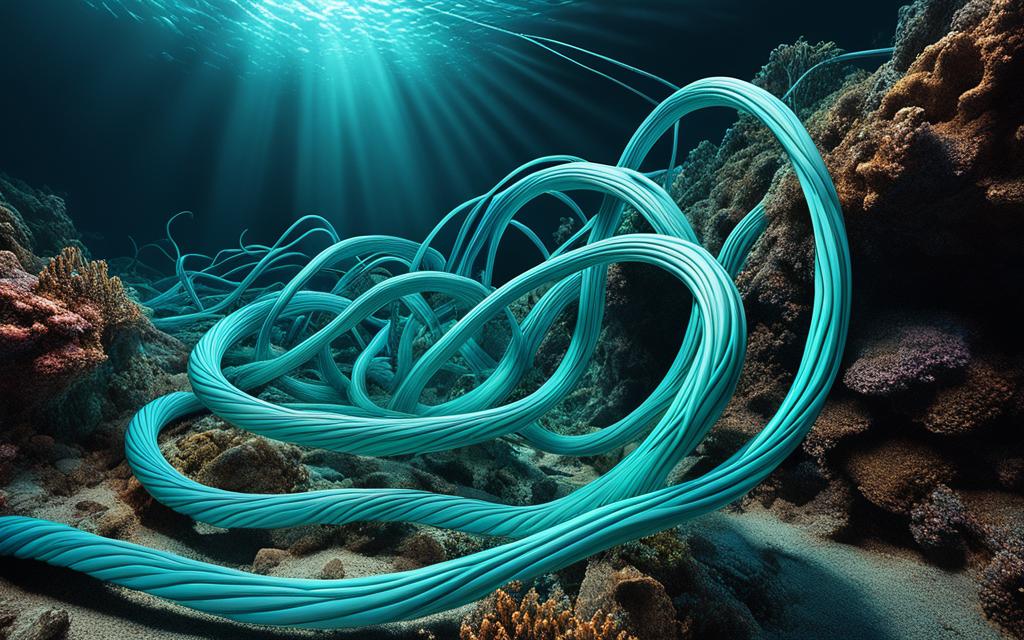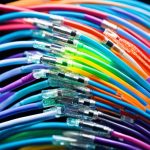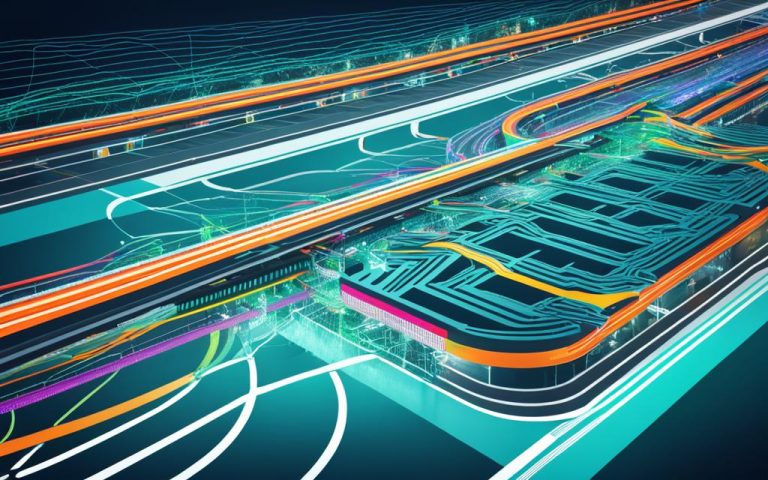Undersea fiber optic cables have revolutionized global communication, enabling seamless data transfer across continents. These intricate networks of cables form the backbone of our interconnected world, facilitating the exchange of information and driving international trade and financial transactions.
From the shores of one country to another, undersea fiber optic cables traverse the depths of the ocean to create a global communication network that supports trillions of dollars worth of daily transactions. The reliance on these cables is evident in every aspect of our lives, from streaming videos to conducting international business affairs.
Imagine a world without undersea fiber optic cables – global communication would be slow, unreliable, and limited. The undersea cables have become a critical infrastructure, serving as the conduits that connect us all.
Stay with us as we delve into the technology, construction, data transfer rates, lifespan, environmental impact, and the future of these essential undersea fiber optic cables. Let’s explore the fascinating world that lies beneath the ocean surface.
The Technology Behind Undersea Fiber Optic Cables
Undersea fiber optic cables play a critical role in global communication, enabling the seamless transfer of vast amounts of data across continents. These cables are constructed using silica glass fiber optic strands, which provide excellent transmission properties for light signals. The G.654 subset of fiber used in undersea cables allows light to travel long distances without significant signal degradation, ensuring reliable communication over extensive submarine routes.
To maximize the capacity of undersea fiber optic cables, Dense Wavelength Division Multiplexing (DWDM) technology is employed. DWDM enables the transmission of multiple optical signals or wavelengths simultaneously through a single fiber strand. By utilizing different wavelengths of light, each carrying its own data stream, DWDM technology enables the efficient movement of high-capacity data across submarine networks.
Benefits of DWDM Technology
“DWDM technology revolutionized the capabilities of undersea fiber optic cables by exponentially increasing transmission capacity,” explains Dr. Emma Carter, a leading expert in submarine cable systems. “With DWDM, these cables can carry terabits of data per second, effectively meeting the ever-growing demand for faster and more reliable connectivity.”
The implementation of DWDM technology has significantly enhanced the capability of undersea fiber optic cables, empowering them to meet the demands of the digital age. This technology has enabled submarine cables to keep pace with the exponential growth in global data traffic and support critical applications such as cloud computing, video streaming, and international telecommunication networks.
Advancements in Fiber Optic Technology
In recent years, advancements in fiber optic technology have further improved the performance of undersea cables. The development of low-loss fibers with enhanced signal integrity and higher data rate capabilities has made undersea communication more efficient and reliable. Additionally, ongoing research and innovation in optical amplification and signal processing techniques continue to push the boundaries of data transmission capacity over undersea fiber optic networks.
The Future of Undersea Fiber Optic Cables
As the demand for data-intensive applications continues to grow, the future of undersea fiber optic cables remains promising. New projects and investments are underway to extend the reach and capacity of submarine networks, ensuring seamless connectivity between continents. Collaborations between countries, technology companies, and telecommunication providers are driving the development of advanced undersea cable systems, pushing the limits of what these vital infrastructure can achieve.
| Advantages of Undersea Fiber Optic Cables | Challenges of Undersea Fiber Optic Cables |
|---|---|
|
|
The Construction of Undersea Fiber Optic Cables
Undersea fiber optic cables are a technological marvel that requires careful construction and planning. These cables consist of multiple layers that work together to ensure reliable data transmission across vast oceanic distances.
The Cable Layers
The construction of an undersea fiber optic cable involves several distinct layers, each serving a specific purpose in protecting the delicate fiber optic strands within.
- The Outer Protective Layer: The outermost layer is composed of marine-grade polyethylene, which provides insulation and shields the cable from damage caused by saltwater, UV radiation, and external forces. This layer is crucial in ensuring the cable’s longevity in the harsh ocean environment.
- Strength Members: Steel strength members are embedded within the protective layer to enhance the cable’s tensile strength and resistance to underwater pressures. These strength members prevent the cable from being crushed or damaged by the immense weight of the water above.
- Copper Conductors: Copper conductors are included in the cable design to provide power for repeaters along the length of the cable. These repeaters boost and amplify the optical signals, allowing them to travel longer distances without significant loss of signal strength.
- Glass Fiber Core: At the heart of the cable lies the glass fiber core, which consists of multiple ultra-thin strands of silica glass. These fiber optic strands are responsible for transmitting pulses of light, carrying vast amounts of data across continents with unparalleled speed and accuracy.
Cable Landing Stations
When undersea fiber optic cables approach the shore, they connect to cable landing stations, which serve as the gateway between the undersea cables and the land-based infrastructure.
Cable landing stations, also known as landing points or cable terminals, house the necessary equipment and infrastructure for data transfer and distribution. They act as the vital link between the undersea cables and the terrestrial networks, enabling seamless data transmission to various locations around the world.
These strategically located stations handle the conversion of optical signals into electrical signals, allowing data to be seamlessly integrated into the wider telecommunications network. Additionally, they ensure that the data is properly routed to its intended destination, whether it be for internet services, phone calls, or other forms of communication.
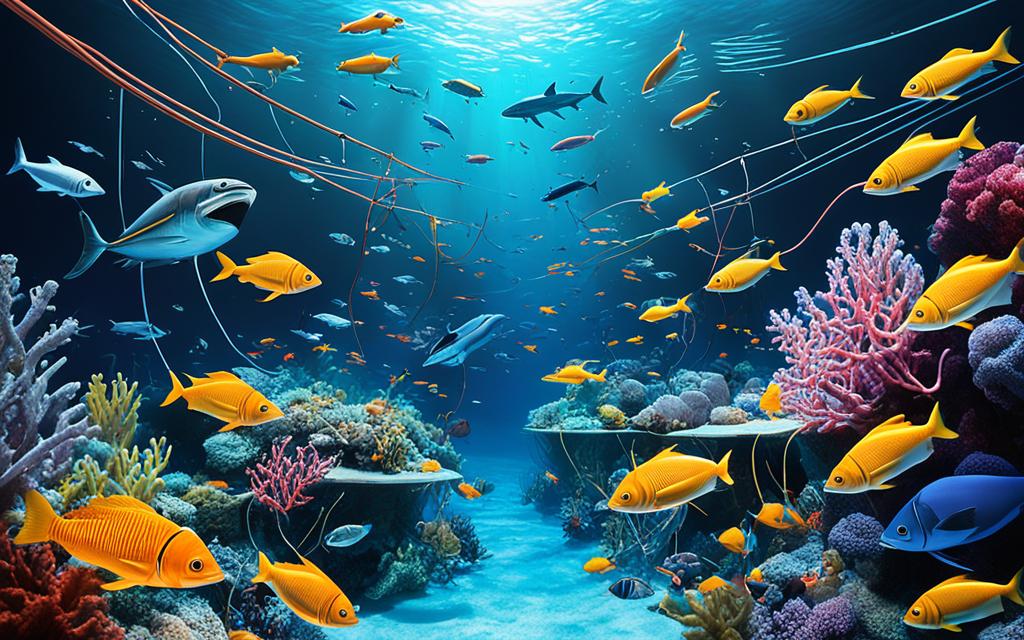
Data Transfer Rates and Lifespan of Undersea Cables
When it comes to undersea fiber optic cables, data transfer rates play a crucial role in determining the efficiency of global communication. These rates, which vary depending on the age and technology of the cables, directly impact the speed at which information travels across continents.
Older undersea cables may not be able to support the same high data transfer rates as their newer counterparts. Advancements in technology have allowed for the development of cables that can transmit larger volumes of data at faster speeds, ensuring faster and more reliable communication.
On the other hand, the lifespan of undersea cables is another important factor to consider. Typically, undersea cables have a lifespan of around 25 years, after which they may need to be replaced or undergo significant maintenance. As with any infrastructure, the lifespan of undersea cables depends on various factors, including the quality of the cable and the environmental conditions it faces.
When cables reach the end of their lifespan, they can be repurposed or salvaged, often undergoing extensive recycling processes to minimize waste. However, some cables may also be left unused on the ocean floor if they are no longer viable for active use.
The Impact of Data Transfer Rates
The ability of undersea cables to support high data transfer rates is crucial in meeting the demands of today’s data-driven world. With the increasing reliance on cloud computing, streaming services, and real-time data transmission, undersea cables must be capable of handling massive amounts of information.
High data transfer rates ensure faster download and upload speeds, reducing latency and improving overall user experience. This is particularly important for businesses that rely on international communication for their operations, such as financial institutions, multinational corporations, and research organizations.
Quote: “The speed and reliability of undersea cables are vital for businesses in today’s interconnected global economy. By enabling faster and more efficient communication, these cables contribute to the growth and success of countless industries.”
Maximizing Cable Lifespan
To ensure the longevity of undersea cables, proper maintenance and regular inspections are essential. Cable operators employ advanced monitoring systems to detect any faults or weaknesses in the cables, allowing for timely repairs and replacements.
Periodic maintenance work, such as cleaning, is also carried out to prevent degradation caused by marine organisms or natural wear and tear. Additionally, environmental factors, such as temperature and pressure changes, can affect cable performance, making it crucial to design cables that can withstand these conditions.
Investing in the latest cable technologies and materials also contributes to increasing the lifespan of undersea cables. Ongoing research and development focus on improving the durability and reliability of cables to meet the ever-growing demands of global communication.
Data Transfer Rates and Lifespan Comparison
| Cable Type | Data Transfer Rates | Lifespan |
|---|---|---|
| Older Cables | Lower speeds compared to newer cables | Around 25 years |
| Newer Cables | High-speed transmission capabilities | Around 25 years |
Image:
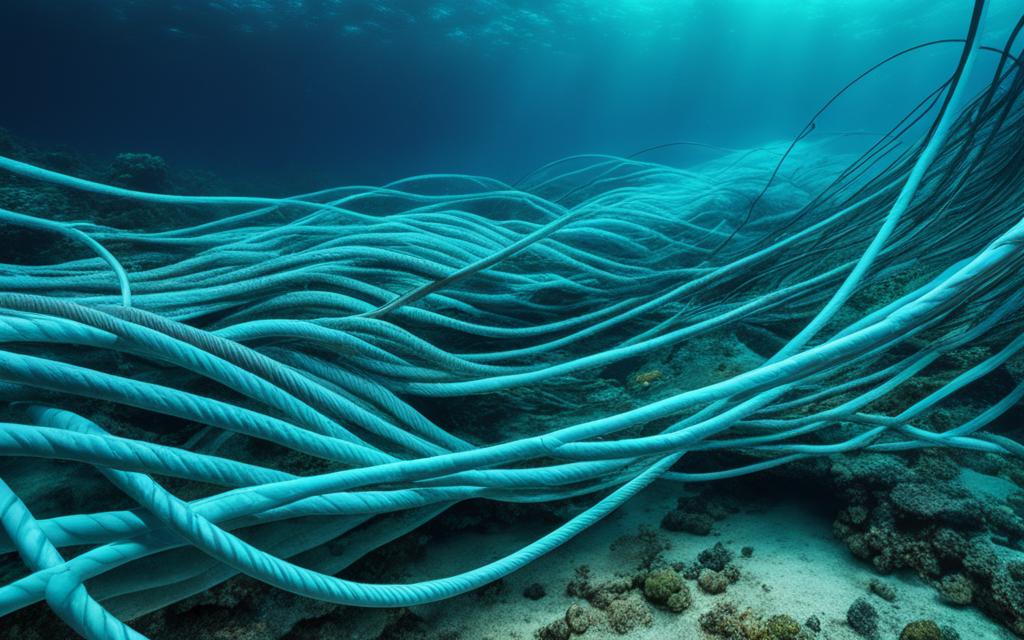
Environmental Impact and Cable Protection
Submarine cables have a minimal environmental impact when properly installed. In fact, they can even contribute to the growth of marine ecosystems within a few months. The cables act as a new substrate for marine life, providing a surface for organisms to attach and thrive.
Cable protection zones are specifically designated areas on nautical charts to safeguard the cables and promote the conservation of marine wildlife. These zones serve as sanctuaries, creating a safe space for various species to flourish without disruption.
However, despite these protective measures, submarine cables face significant threats from commercial fishing and ship anchors. These activities can lead to cable faults and disruptions in communication, posing challenges to maintaining the integrity of the undersea network.
“Submarine cables are crucial for global communication, and it is essential to ensure their protection and preservation.” – Environmental Scientist
To illustrate the importance of cable protection, let’s take a closer look at the potential consequences of these threats:
| Threat | Impact |
|---|---|
| Commercial Fishing | Accidental entanglement in fishing nets can cause cable breaks, leading to communication outages and costly repairs. |
| Ship Anchors | Improper anchoring can damage the cables, disrupting connectivity and impacting global communication networks. |
Efforts must be made to raise awareness among fishing communities and maritime industries about the locations of submarine cables and the importance of avoiding activities that can harm them. Through collaboration and education, we can mitigate the risks and maintain the reliability of undersea fiber optic cables for continued global communication.
Cable Faults and Repairs
Cable faults can occur due to various reasons, including natural disasters, marine activity, and damage to the armor layer. These faults can disrupt the seamless flow of communication and data transfer through undersea fiber optic cables.
When a cable fault occurs, repair ships are deployed to the location to carry out the necessary repairs. The repair process involves splicing and restoring the damaged sections of the cable to ensure its functionality.
In shallow waters, repairs can be performed by divers who are trained in underwater cable repair techniques. These divers carefully maneuver through the depths to identify and fix the faults.
However, in deeper waters where divers cannot reach, a different approach is required. The cable needs to be hoisted onto a repair ship, where specialized equipment is used to access and repair the faults.
It is a complex and intricate process that requires the expertise of engineers, technicians, and underwater specialists to ensure the successful restoration of the cable’s functionality.
Failure to promptly address cable faults can lead to serious consequences. Damaged cables can result in a loss of capacity, increased latency, or even a complete halt in communication activity. Therefore, efficient and effective repair processes are crucial to minimize disruptions and maintain the uninterrupted flow of data.
“The repair process for undersea fiber optic cables is a meticulous endeavor that demands expertise, precision, and advanced technology. Our dedicated teams of engineers and technicians work tirelessly to swiftly identify and address cable faults, ensuring the reliability and resilience of these vital communication networks.” – John Richards, Director of Undersea Cable Repairs, Global Communications Inc.
Common Causes of Cable Faults
| Cause | Description |
|---|---|
| Natural Disasters | Seismic activities, underwater landslides, and tsunamis can damage undersea cables. |
| Marine Activity | Ship anchors, fishing trawlers, and other maritime operations can accidentally damage cables. |
| Damage to Armor Layer | Physical impact or abrasion can compromise the outer armor layer, exposing the delicate fiber optic strands to potential damage. |
The Importance and Future of Undersea Fiber Optic Cables
Undersea fiber optic cables play a critical role in the global communication landscape, serving as the backbone for international trade, financial transactions, and the exchange of information. These cables are essential for connecting countries and continents, enabling the seamless transfer of data across the globe.
As technology continues to advance, the demand for data grows exponentially. With the rise of cloud computing, streaming services, and the Internet of Things (IoT), the future of undersea cables is becoming increasingly significant. To meet the growing need for high-speed, reliable connections, major companies like Google and Facebook are investing heavily in new cable projects.
Google, for instance, recently announced the construction of multiple undersea fiber optic cables, including the ‘Grace Hopper’ cable that will connect the United States, the United Kingdom, and Spain. These new cables aim to enhance global connectivity and ensure that data can flow seamlessly across borders.
The future of undersea fiber optic cables holds immense potential. Not only do these cables support the existing demand for data transfer, but they also lay the foundation for emerging technologies such as 5G networks, artificial intelligence, and self-driving cars. These advancements rely on fast and reliable connections, making undersea cables an indispensable infrastructure for the digital age.
Enhancing Global Connectivity and Economic Growth
“Undersea fiber optic cables are the lifelines of the global economy, enabling trillions of dollars’ worth of transactions every day. By investing in these cables, we can strengthen international collaboration, empower businesses, and promote economic growth on a global scale.”
In addition to their impact on technology and connectivity, undersea cables also play a vital role in driving economic growth. The seamless exchange of information facilitates international trade, fosters innovation, and empowers businesses to expand their operations globally.
With the ongoing digital transformation of industries and the increasing reliance on data-driven decision-making, undersea fiber optic cables will continue to shape the future of global communication. As technology evolves and the world becomes more interconnected, the importance of these cables will only continue to grow.
| Benefits of Undersea Fiber Optic Cables | Impact on Global Communication |
|---|---|
| High-speed and reliable data transfer | Enables real-time communication across continents |
| Supports massive data capacity | Facilitates the exchange of large volumes of information |
| Diverse routing options for enhanced resilience | Ensures continuous connectivity even in the event of cable faults |
| Enables global collaboration and knowledge sharing | Connects researchers, educators, and professionals worldwide |
The future of undersea fiber optic cables is bright. As technology advances, these cables will continue to play a pivotal role in shaping the world’s global communication network. Investing in the maintenance, expansion, and innovation of undersea cables is crucial to meet the growing demands of the digital age and ensure a connected world for generations to come.
Conclusion
Undersea fiber optic cables play a vital role in our interconnected world, serving as the backbone of the global communication network. These cables carry over 95% of all international data, enabling the exchange of information on a massive scale. With their revolutionary technology, undersea fiber optic cables have transformed the way we communicate and conduct business globally.
Despite the challenges they face, including natural disasters and human activities, undersea cables continue to expand to meet the growing demand for high-speed, reliable connections. As our reliance on these underwater networks increases, it becomes crucial to invest in their maintenance and expansion to ensure the smooth flow of data across the globe.
Looking ahead, the future of undersea fiber optic cables is promising. Companies like Google and Facebook are actively involved in new cable projects to meet the ever-increasing need for faster and more efficient communication. As technology advances and data demands grow, undersea cables will remain an essential infrastructure for global connectivity, supporting international trade, financial transactions, and the free exchange of information.
FAQ
What are undersea fiber optic cables?
Undersea fiber optic cables are cables made of silica glass fiber optic strands that connect countries and continents, enabling global communication and the exchange of data.
How are undersea fiber optic cables constructed?
Undersea fiber optic cables are composed of marine-grade polyethylene with steel strength members, copper conductors, and a glass fiber core. The cables are relatively thin, with a diameter similar to that of a garden hose, and have an outer layer for protection against the ocean environment. Cable landing stations serve as the connection point between the undersea cables and land-based infrastructure.
What is the lifespan of undersea cables?
The lifespan of undersea cables is typically around 25 years. After reaching the end of their lifespan, they can be repurposed, salvaged, or left unused on the ocean floor.
What is the impact of undersea fiber optic cables on the environment?
When properly installed, undersea fiber optic cables have minimal impact on the environment. In fact, they can serve as a new marine ecosystem substrate within a few months. Cable protection zones, designated areas on nautical charts, aim to safeguard the cables and promote marine wildlife sanctuaries.
How are undersea cable faults repaired?
When a cable fault occurs, repair ships are sent to the location to splice and repair the cable. In shallow waters, divers can perform the repairs, while deeper waters require hoisting the cable onto a ship.
What is the importance of undersea fiber optic cables?
Undersea fiber optic cables are essential for global communication, facilitating international trade, financial transactions, and the exchange of information. They carry over 95% of all international data and have revolutionized global communication.

